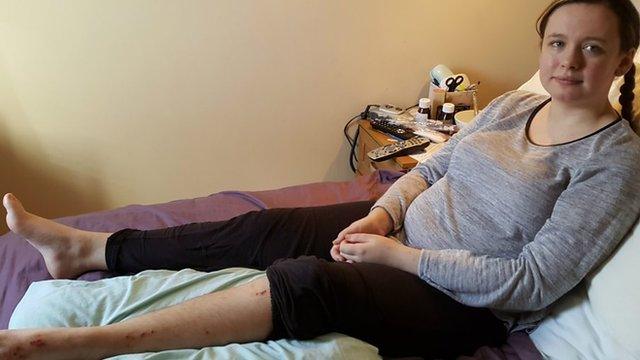Woman who wanted an amputation says other leg now paralysed
- Published
Why I wanted to have my leg amputated
A woman who fought to have her left leg amputated says her remaining leg is now paralysed following the operation.
Jess Laughton, 24, has a syndrome which means if "someone just blew" on her foot, it caused excruciating pain.
"It wasn't a life, I couldn't imagine doing that for another 60 years," says Jess.
Despite the paralysis, she hopes the operation will help her "get some independence back".
Jess, from Hutton Cranswick in East Yorkshire, was a competitive gymnast when she was younger.
But after she broke her ankle when she was 12, she developed a neurological condition called complex regional pain syndrome, which has worsened over time.
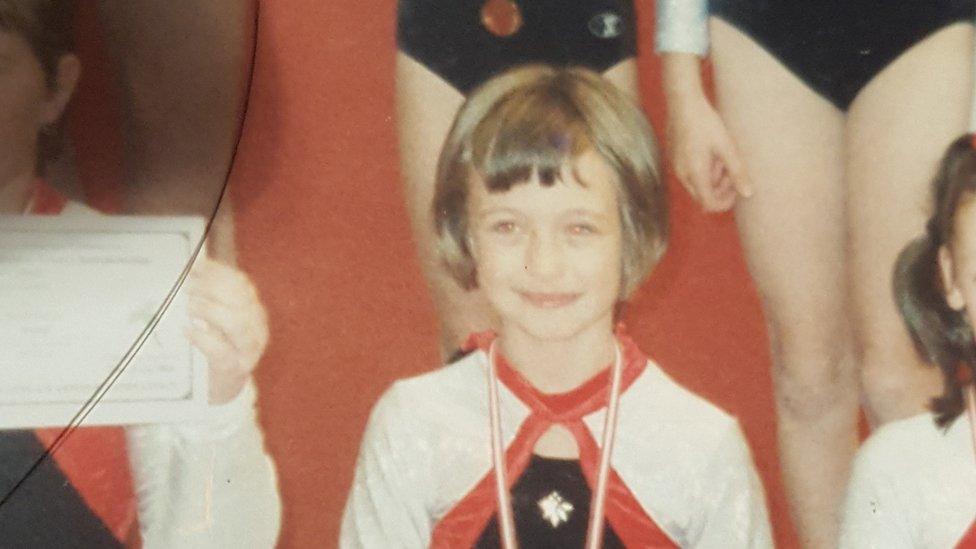
Jess says she was always the sporty one when she was younger
"I did my GCSEs, got student of the year in college and went to uni. I was training to be a paediatric nurse until I got too ill in my second year."
She's been bed-bound for the last two years.

Complex regional pain syndrome (CRPS)
CRPS gives a person severe and debilitating pain, usually confined to one limb but it can spread to other parts of the body
It may affect up to one in 3,800 people in the UK but it is difficult to estimate due to misdiagnosis.
Women make up about three of every four cases
Symptoms can include chronic pain, strange sensations in the affected limb, changes to skin, hair and nails, joint stiffness, insomnia and tremors
There is no known cure for the syndrome, but it can be managed
Source: NHS Choices, external

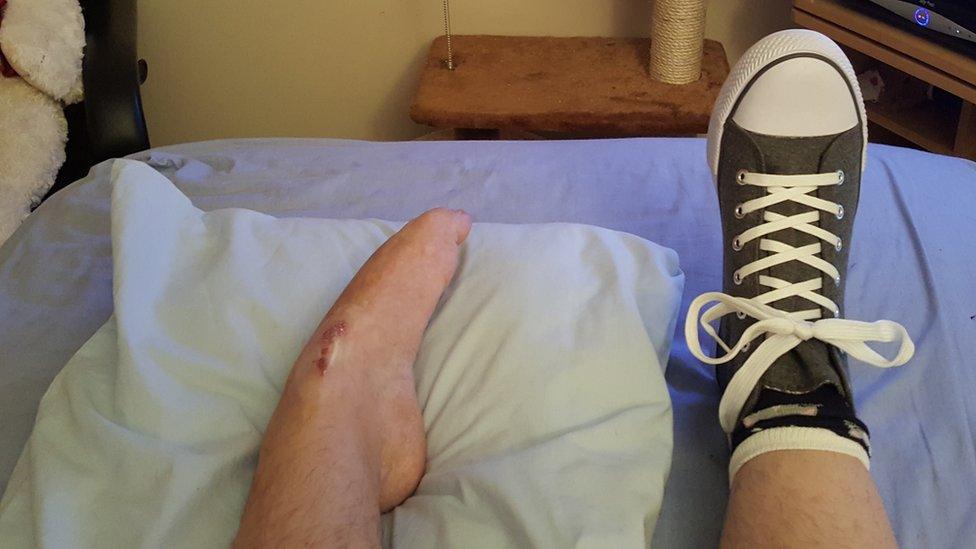
Jess' left foot was stuck pointing downwards
'It wasn't a life'
The agony in Jess's left foot became unbearable.
"You couldn't blow on it, you couldn't brush past it. Things like that would cause immense pain."
After "trying everything" to help treat the syndrome, Jess decided she'd be better off without her left leg.
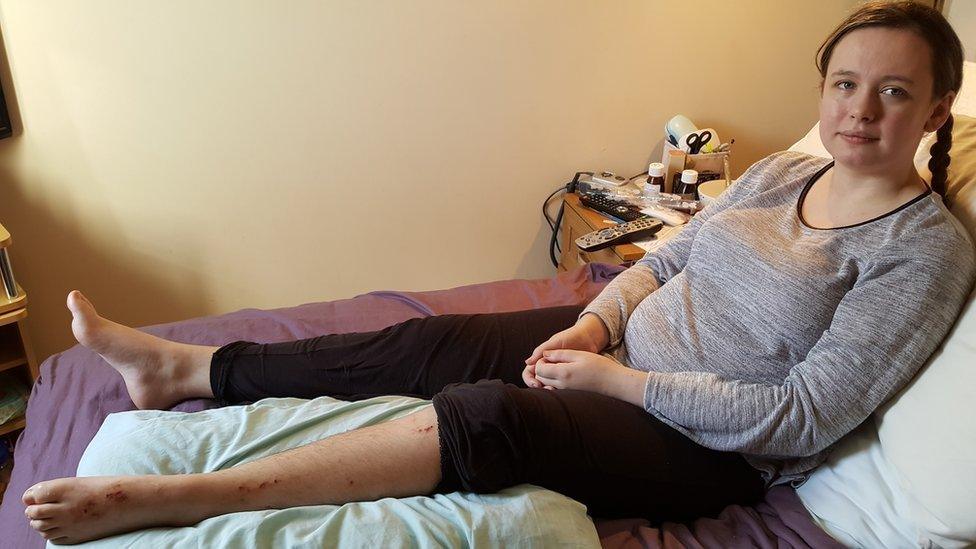
Jess had been bed-bound for two years
To start with, she was told it couldn't be done on the NHS because removing her leg wouldn't end her pain.
But she thought it was worth it - because without the "hypersensitive" foot, Jess felt she could at least get out of bed and out of her house.
One operation was cancelled and then the surgeon pulled out.
Not knowing what else to do, she wrote to 500 other surgeons, asking for help.
Most never replied but she was left with "20 or 30 positive leads".
"The day I met the surgeon who finally did the op he was very quick. He told us he was going to do it, came back with his diary and booked us in two weeks later.
"I asked if I could hug him," says Jess.
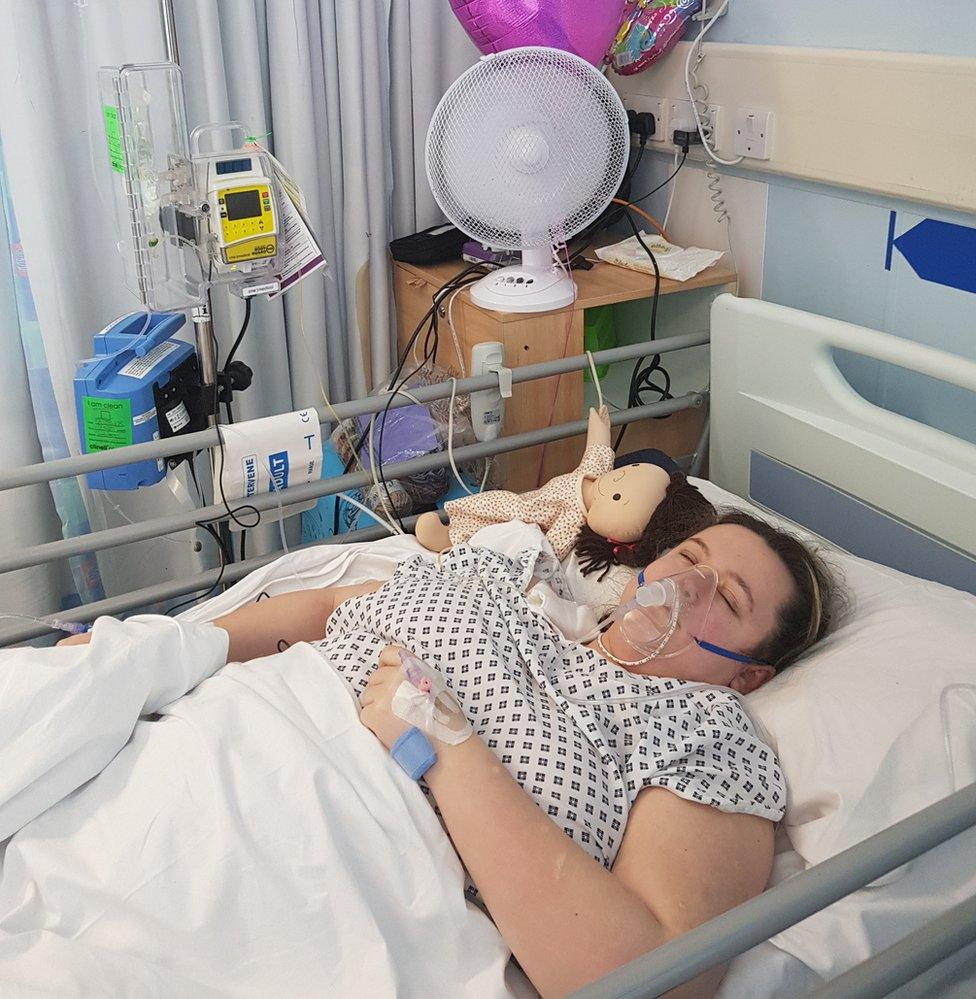
Jess after her amputation
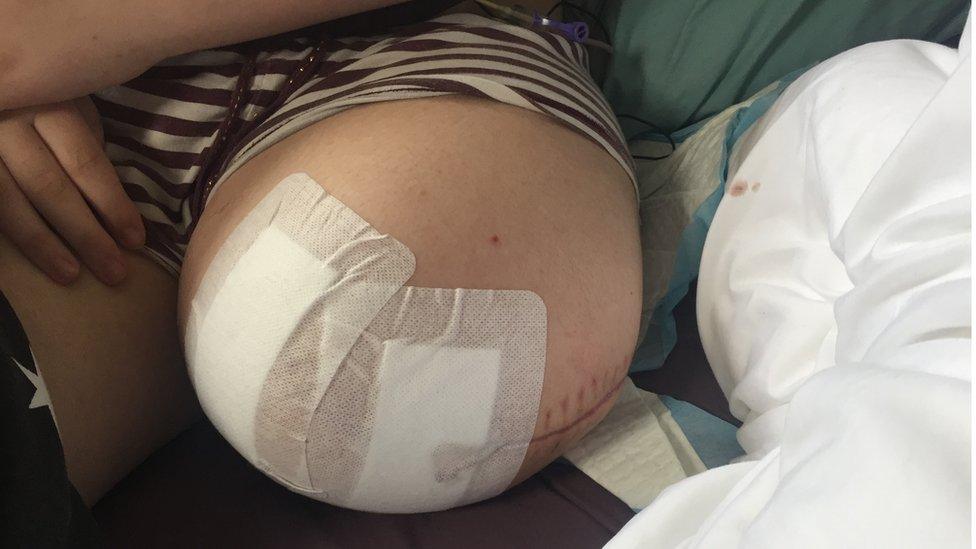
Jess has called her stump Freya
But six weeks on from the operation at Hull Royal Infirmary, Jess still hasn't been able to get out of bed.
Her remaining leg is paralysed.
"I had an epidural but they had to take it out when they realised my right leg wasn't working."
She doesn't know exactly what happened and the hospital says it won't comment on individual cases.
In a statement, it said: "Patients have the risks associated with any given procedure or operation outlined to them prior to it going ahead."
Jess has been told to "wait and see" what happens with her remaining leg.
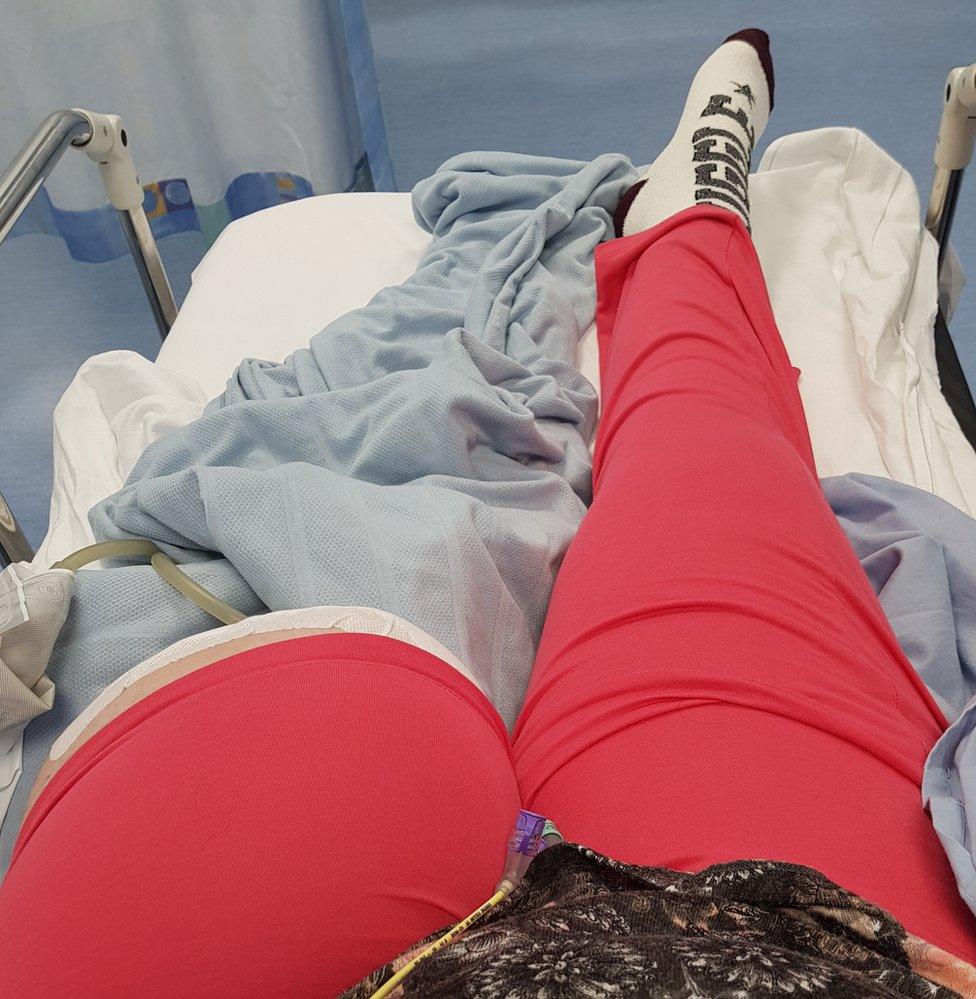
These were the first pair of trousers that Jess wore after her operation
"People have to wash me, dress me, help me go to the toilet, your whole dignity goes," says Jess.
"I'd be completely lost without my mum. I do often feel like I'm a burden and things would be better for her if I wasn't around.
"On the worst days, you do just want to give up and I've come very close many, many times."
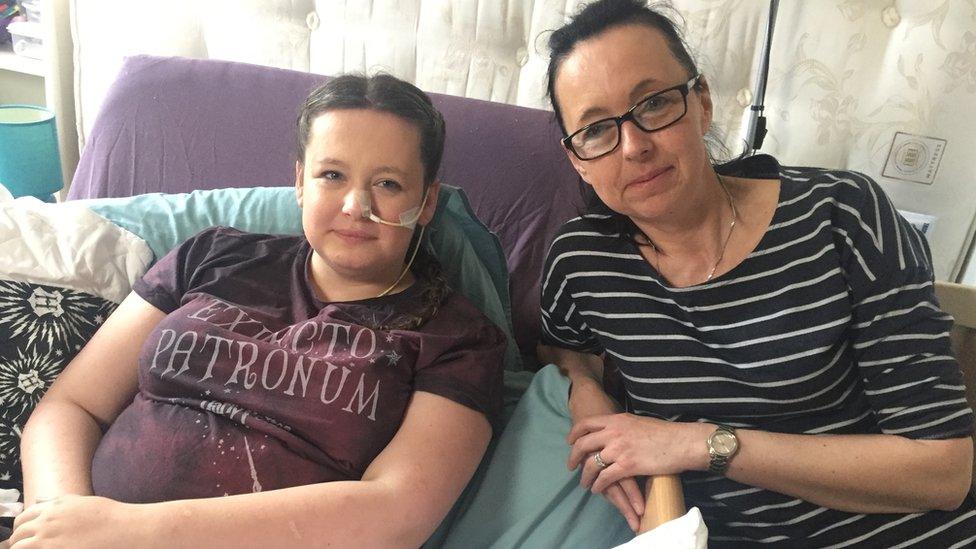
Mum Tracey is Jess's main carer
The amputation was never going to get rid of her chronic pain.
But Jess feels she'll have a better quality of life - because she'll be able to get out and about, without fear of her foot being touched or knocked.
And if her right leg remains paralysed, Jess is still upbeat about the future.
"Once the hoists are working, I'll be able to go out in a wheelchair which I couldn't do before."
"What I'm looking forward to is feeling like I've achieved something in the day, actually physically doing something, getting my brain working, feeling physically tired rather than emotionally drained."
Follow Newsbeat on Instagram, external, Facebook, external and Twitter, external.
Listen to Newsbeat live at 12:45 and 17:45 every weekday on BBC Radio 1 and 1Xtra - if you miss us you can listen back here.
- Published15 May 2017

- Published1 October 2016
